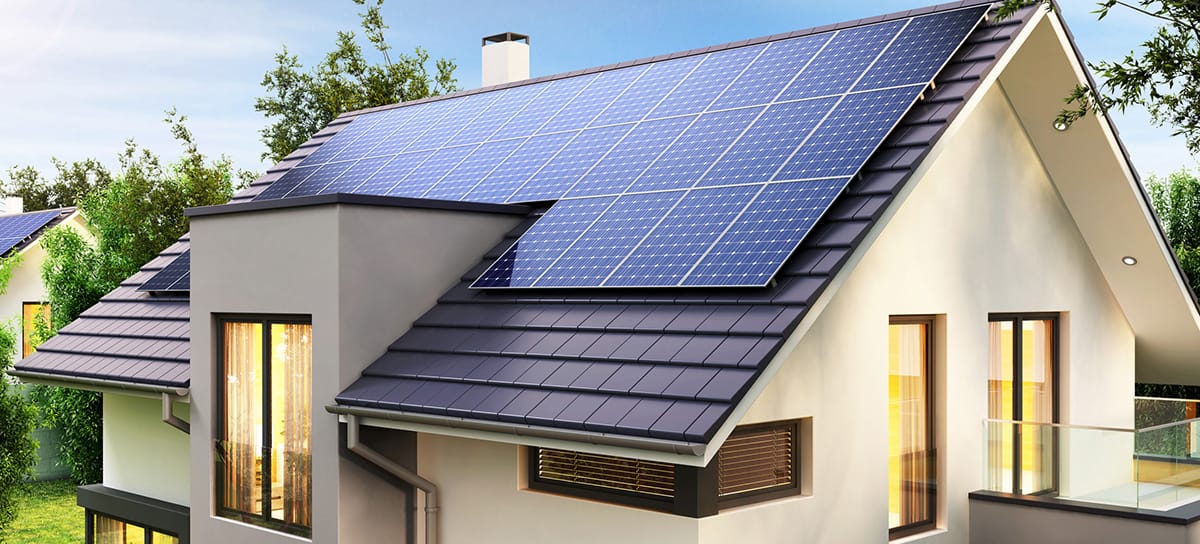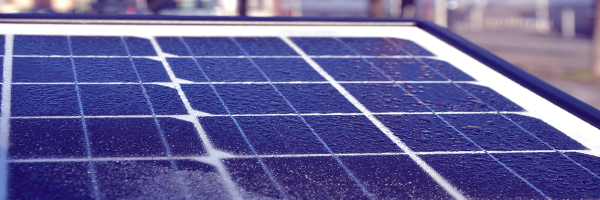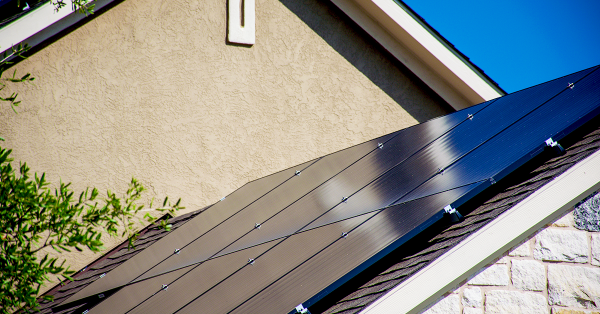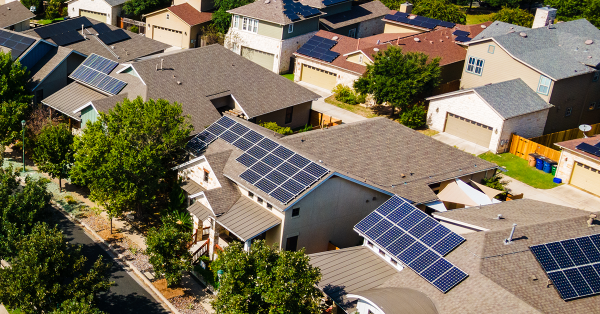The sun is a never-ending source of energy. Luckily, scientists have already figured out a way to harness the sun’s power and convert it into usable clean energy. Given its availability, renewability, and many benefits, the sun's energy is the best alternative to fossil fuels. Therefore, it plays a critical role in the future of the global energy industry.
Despite what people believe, capturing the sun's energy does not require massive solar farms. Individuals can install rooftop solar panels right on top of their houses to harness the sun’s power and convert it to electricity. When light from the sun hits the panels on a rooftop, the solar panel converts the energy to direct current electricity.
Get a solar quote from Rhythm Energy in minutes.
Rhythm could be your unbiased concierge and help you determine if solar is right for your home. We could help you save thousands by making sure you have the perfect solar and battery storage system, installer, and quote.
Inverters are included with rooftop solar panels to convert direct current electricity into alternating current (AC). Many electronics and home appliances use this type of current, including smartphones, televisions, and tablets.
What Is Rooftop Solar?
Rooftop solar is a photovoltaic (PV) system with electricity-generating solar panels installed on a home or business roof. Photovoltaic modules, mounting systems, cables, solar inverters, and other electrical accessories are among the different components of such a system.
Rooftop solar power systems are minuscule compared to megawatt-scale photovoltaic power plants on the ground. Rooftop PV systems on residential buildings typically have a capacity of 5 to 20 kilowatts (kW). But those on commercial buildings usually have a total of 100 kW or more.
Harnessing the Power of the Sun
Rooftop solar panels rely on how much energy a solar cell (small square-shaped silicon device) can hold to capture the sun’s energy and convert it to power. When sunlight reaches a solar cell, chemical processes occur, releasing electrons and generating electric current.
Photovoltaic cells, like those found in solar calculators, make up most rooftop solar panel cells.
The layers of semiconductor materials composed of doped silicon crystals are the most critical aspects of a photovoltaic cell. The bottom layer contains boron, which bonds with the silicon to form a positive charge. To create an opposite, negative charge, the top layer is covered with phosphorus.
The spot where the two layers come together forms the P-N junction, and as this surface moves, electricity is generated.
Electrons are knocked loose from both layers when the energy from the sun penetrates the cells. This occurs because the boron layer and the phosphorus layer have opposite charges.
The electric field at the P-N junction, on the other hand, blocks energy from flowing elsewhere, requiring the use of an external circuit to provide a path for the electrons to move.
Types of Photovoltaic Cells
Most of the solar cell system is made up of small square cells that are approximately four inches. Because individual cells produce very little power, rooftop solar panels are commonly made up of modules of PV cells. The modules are housed in plastic or glass to protect them from the elements.
There are three basic types of solar cells used in rooftop solar panels.
Single-Crystal Cells
Long cylinders make these solar cells, which are then chopped into hexagonal or circular wafers. Because they produce high-efficiency cells, they are more expensive than other photovoltaic cell types. Installing them can improve your home's energy efficiency by up to 30%. Single-crystal cells make up about 29% of the global market.
Polycrystalline Cells
These cells are created from molten silicon shaped into bars and then cut into smaller squares. It costs less money to fabricate polycrystalline solar cells, but they also have 15% lower efficiency than single-crystal cells. Because the squares are tiny, they are packed closer together and increase energy production.
Amorphous Silicon
The least expensive of the three cell types are the amorphous silicon cells. These cells are silicon sprayed onto a glass or metal surface in thin layers. They have a low energy conversion efficiency of only 5%.
Environmental Effects of Using Solar Power
Rooftop solar panels create electricity using only the sun’s light, making them a cleaner energy source than most other options. Because solar energy is renewable, it has long-term viability.
Rooftop solar does not pose any health risks or release harmful pollutants into the environment, and there’s no need for homeowners to be concerned with purchasing additional land for the installation of the system. Rooftop solar panels can assist in reducing global warming if they are widely used.
Economic Impact of Solar Rooftops
Rooftop solar power is a cost-effective solution for your home. Although solar panels come with a significant upfront investment, they have long-term benefits for nature and the community.
Over time, they can be more affordable than diesel generators or power grid electricity depending on your location, because once the solar power takes the place of on-grid electricity, your energy bills will go down.
Rooftop Solar Panel Requirements
Weather conditions such as air temperature and snow have no effect on rooftop solar panels. On the other hand, PV cells must have clear access to the sun’s rays to properly collect solar energy.
As a result, shade can diminish output from the solar panel cells. For best results, the panels should be installed on the east or south side of your roof to ensure that they aren't too close to any tall buildings or trees that could block the sun as it moves during the day.
Another factor to consider when placing solar panels on a rooftop is their size. The scale of your PV system is determined by the roof size, the amount of electricity you want to create, and your budget.
Solar energy has the potential to support many life-forms on Earth. After all, solar power is what supplies plants with food, propels breezes, and keeps us warm. It is an economical, renewable, and infinite energy source for communities around the world.
Determining If Your Roof Is Right for Solar Panels
Most roofs are equipped to handle the installation of solar panels. However, key factors will determine the cost, size, and efficiency of your solar energy system.
Direction
North-facing roofs often lack direct sunlight, making them the less desirable choice for solar panels.
Shade
Your panels should be exposed to a minimum of five hours of sunlight each day. If large trees or buildings obstruct the sun from shining on your roof, they could prevent solar panels from working effectively.
Angle of the Roof
The ideal angle for installing solar panels is 30 degrees. However, anywhere from 0 to 45 degrees is acceptable. If you have a flat roof, tilted racks are used for mounting your solar panels.
Size
Residential solar installation requires a minimum of 500 square feet of adjacent space.
Type of Roof
Rooftop solar systems are most successfully mounted on asphalt shingles or corrugated metal roofs. Slate or tile can be used, but the installation is more complex and expensive. Wood shingles are the least desirable option because they could present a fire hazard.
Age
If you know your roof needs to be replaced soon, consider doing it before having your solar panels installed. It will cost you more money to remove and reinstall your solar energy system so your roof can be replaced.
Rooftop Solar Operation Costs
Solar panels are low maintenance, durable, and have no moving parts that will break. Whatever minor damage might happen should be covered by the warranty. But there are some fees associated with the lifespan of your solar panels, including the following:
Inverter replacement — approximately every 10 years
Panel inspection by your contractor — once a year
Increased insurance premiums due to additional coverage for your solar power system
The panels will need to be cleaned regularly, but you can do this yourself or hire a contractor to do it for you.
Solar Power and Inclement Weather
Solar panels can be used at any time of the year, even in the winter. Even when it’s cloudy, your panels will generate electricity; however, the output will be significantly decreased. Because there is a close link between solar production and sunlight hours, panels produce less electricity in the winter.
Not even snow can shut down your solar power. As the snow melts, it simply slides off the panels if they are set at a tilt.
Solar Power at Night
Unfortunately, solar panels don’t work at night because they require the sun’s light to generate energy. On the other hand, solar power can be used at night if battery storage is available.
During the day, excess electricity generated by your system can be stored in a battery. The electricity stored in your battery can subsequently be used to power electrical equipment at night.
What Happens to Extra Energy?
You can either store additional energy in a solar battery or use a buyback program to sell the energy back to the utility or retail energy company to manage the excess energy. Your solar energy system may be able to create more renewable energy than you use during peak sunlight hours.
Storing the remaining energy in a solar battery can help you stay connected during power outages or power areas of your home at night.
Deciding If Solar Works for You
Going solar may seem difficult at first. However, you can get a solar panel system on your roof up and running in a couple of weeks with the correct resources.
The first step is to understand how solar technology works, and after reading this blog, you're already well on your way. But the next step in your solar journey could be even more complicated, and that’s deciding whether solar power is appropriate for your home.
Solar calculators available online will calculate a detailed solar estimate for your home. They use location-based data, satellite images, and machine learning to estimate how many solar panels you’ll need, how much they’ll cost, and how much money you’ll save.
In other words, these calculators provide you with all of the information you need to figure out if installing a rooftop solar energy system in your home is a worthwhile investment.
Rooftop Solar Buyback Plans in Texas
Once you commit to solar installation, you have one more choice to make. As a Texan, you have the power to choose your electricity provider, even if you have renewable energy.
At Rhythm, our energy plans utilize sources of sustainable energy, like solar. When you choose us, you choose transparency. There are no hidden fees in any of our plans.
After installing your solar energy system, you can enroll in our solar buyback plan to pay yourself for unused energy! You’ll likely see much smaller electricity bills each month by going solar with Rhythm. Buyback credits will appear on your monthly statement, so you can watch your overall energy costs go down.
Signing up is simple. Besides, who doesn’t want to save more money? The team at Rhythm is always available, so contact us anytime if you have questions about rooftop solar and its many benefits for your energy bill and the environment.



